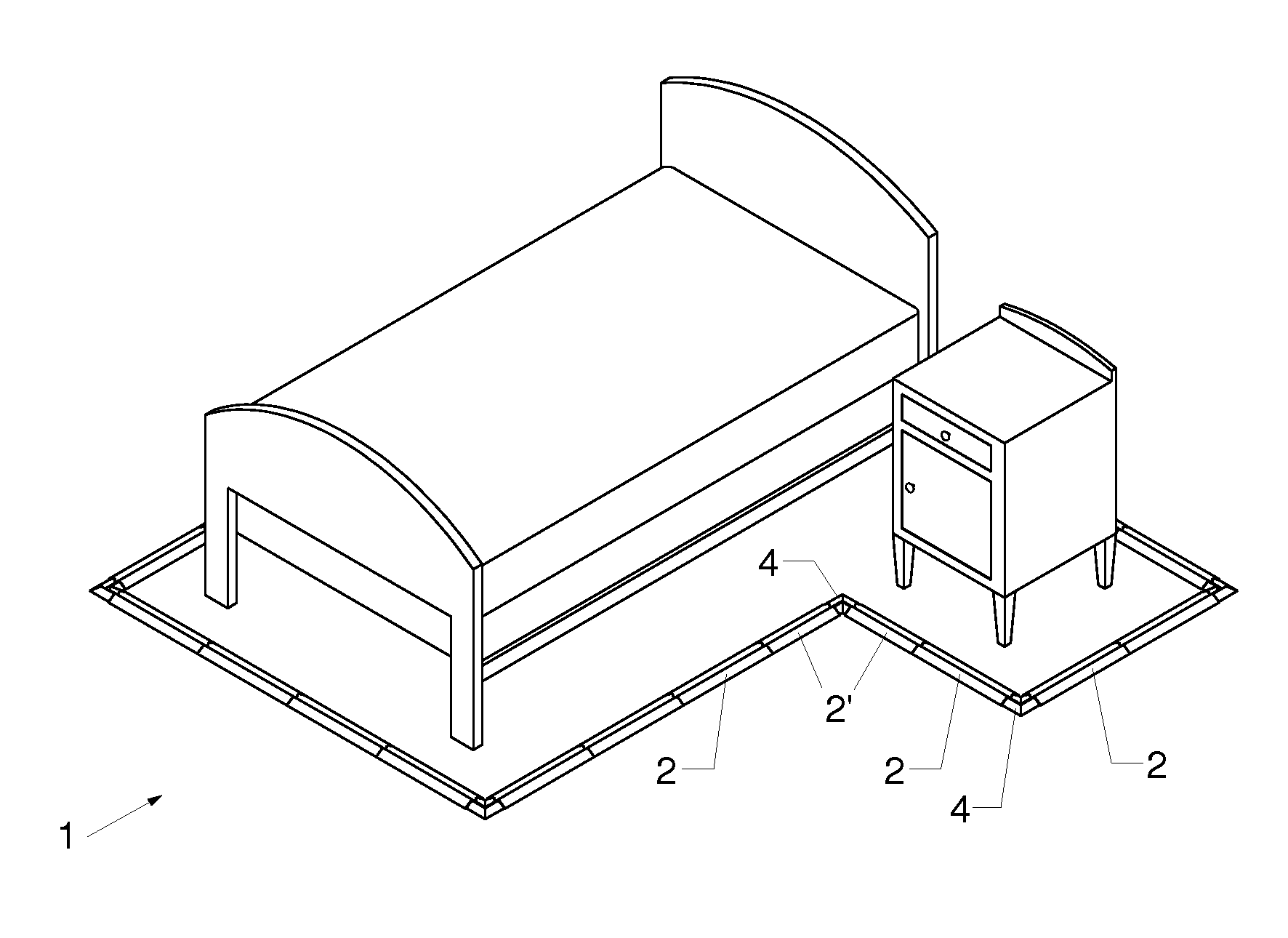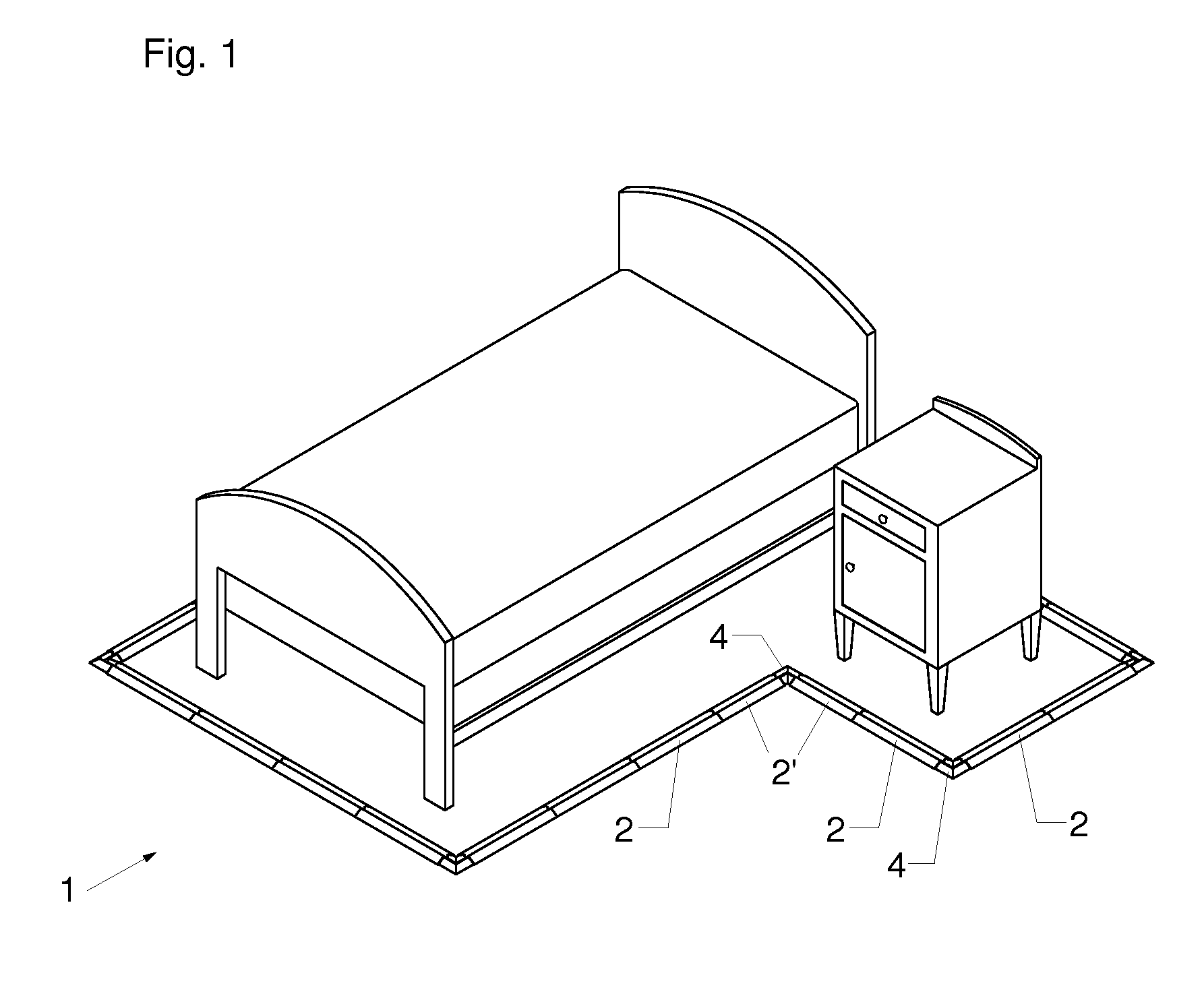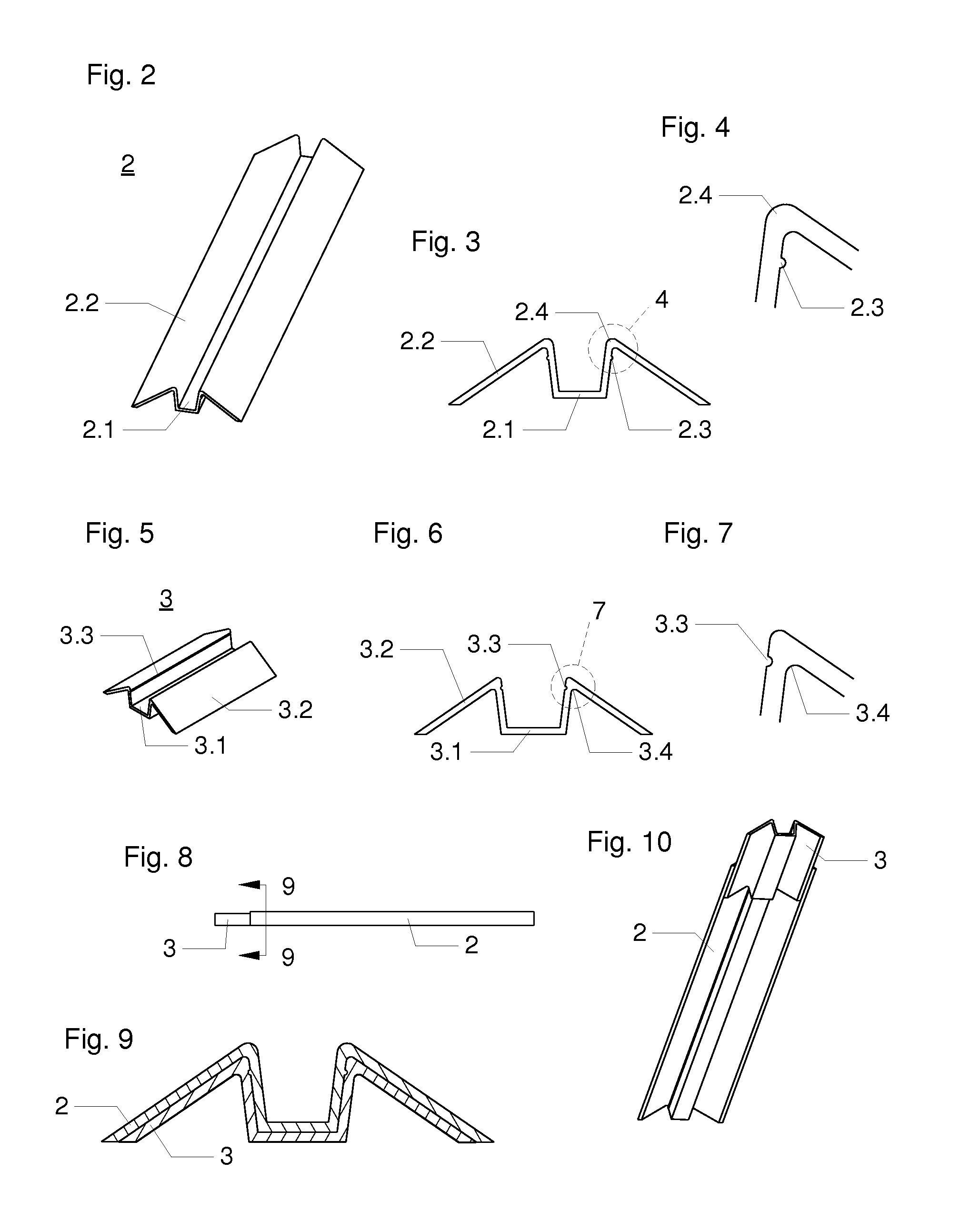Modular bed bug trap system
a trap system and bed bug technology, applied in the field of modular bed bug traps, can solve the problems of bed bugs, unwelcome residents, and other short-term lodging facilities that are particularly susceptible to bed bug infestation, and achieve the effects of simple, inexpensive, and reusabl
- Summary
- Abstract
- Description
- Claims
- Application Information
AI Technical Summary
Benefits of technology
Problems solved by technology
Method used
Image
Examples
Embodiment Construction
[0045]An exemplary setup of a preferred embodiment of the bed bug trap system according to the present invention is shown in FIG. 1, denoted generally by the numeral 1 (although references to bed bugs are made throughout this description—bed bugs being the principle target of the present trap system—it is to be understood that the system is equally suitable for trapping other crawling arthropods). The constituent components of this embodiment are termed in this description and in the appended claims (and denoted numerically) as follows: linear segment (2), ancillary segment (2′), linear connector (3), and corner connector (4). Diatomaceous earth is used as mechanical insecticide.
[0046]Linear segment 2, shown in FIG. 2-4, constitutes a discrete pitfall module of the system. Several units of linear segment 2 are linked contiguously, as described in following paragraphs, to form the complete system. Linear segment 2 comprises a trough-like channel, denoted 2.1, which is substantially U...
PUM
 Login to View More
Login to View More Abstract
Description
Claims
Application Information
 Login to View More
Login to View More - R&D
- Intellectual Property
- Life Sciences
- Materials
- Tech Scout
- Unparalleled Data Quality
- Higher Quality Content
- 60% Fewer Hallucinations
Browse by: Latest US Patents, China's latest patents, Technical Efficacy Thesaurus, Application Domain, Technology Topic, Popular Technical Reports.
© 2025 PatSnap. All rights reserved.Legal|Privacy policy|Modern Slavery Act Transparency Statement|Sitemap|About US| Contact US: help@patsnap.com



